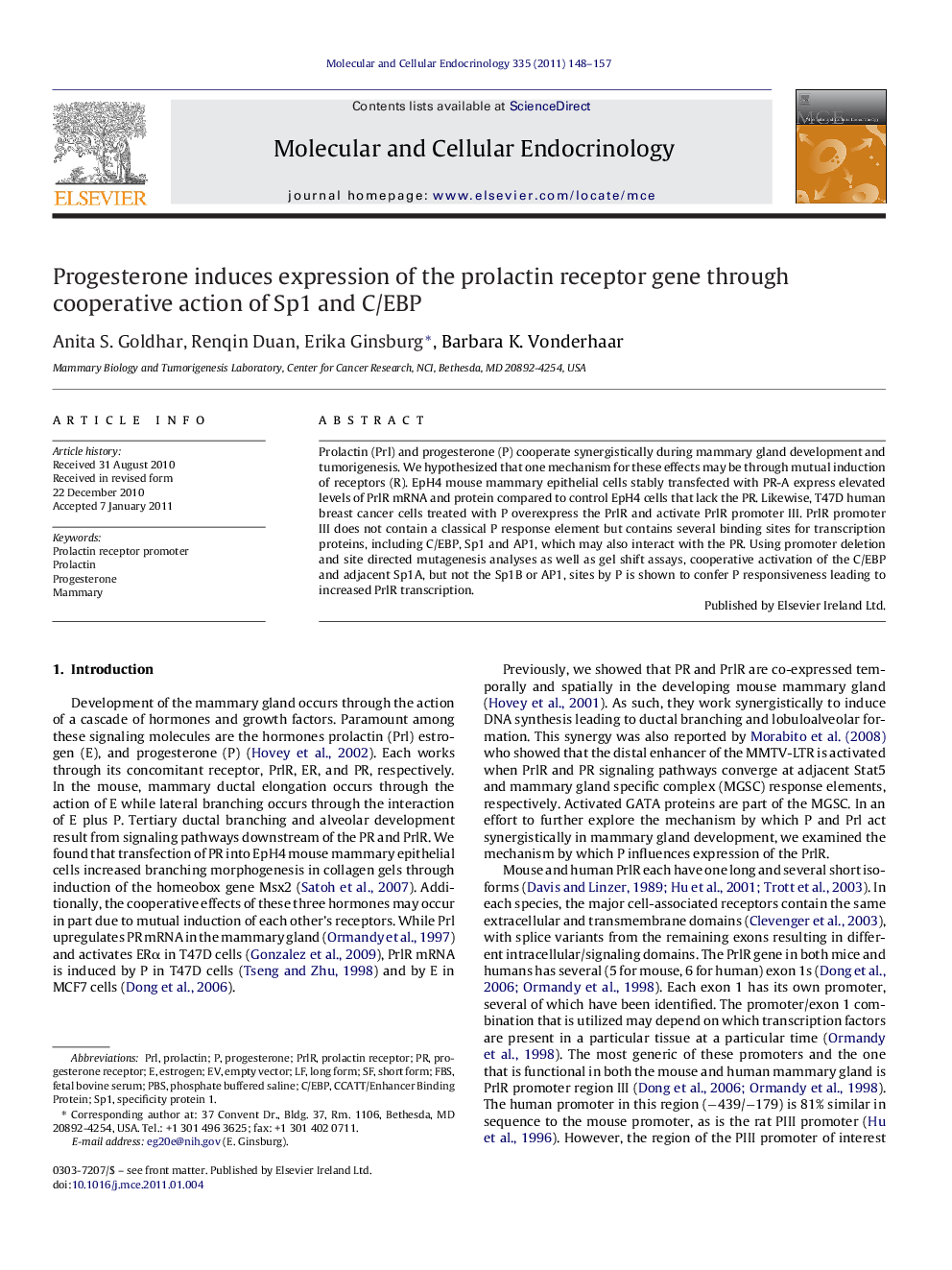| Article ID | Journal | Published Year | Pages | File Type |
|---|---|---|---|---|
| 10956340 | Molecular and Cellular Endocrinology | 2011 | 10 Pages |
Abstract
Prolactin (Prl) and progesterone (P) cooperate synergistically during mammary gland development and tumorigenesis. We hypothesized that one mechanism for these effects may be through mutual induction of receptors (R). EpH4 mouse mammary epithelial cells stably transfected with PR-A express elevated levels of PrlR mRNA and protein compared to control EpH4 cells that lack the PR. Likewise, T47D human breast cancer cells treated with P overexpress the PrlR and activate PrlR promoter III. PrlR promoter III does not contain a classical P response element but contains several binding sites for transcription proteins, including C/EBP, Sp1 and AP1, which may also interact with the PR. Using promoter deletion and site directed mutagenesis analyses as well as gel shift assays, cooperative activation of the C/EBP and adjacent Sp1A, but not the Sp1B or AP1, sites by P is shown to confer P responsiveness leading to increased PrlR transcription.
Keywords
Related Topics
Life Sciences
Biochemistry, Genetics and Molecular Biology
Cell Biology
Authors
Anita S. Goldhar, Renqin Duan, Erika Ginsburg, Barbara K. Vonderhaar,
